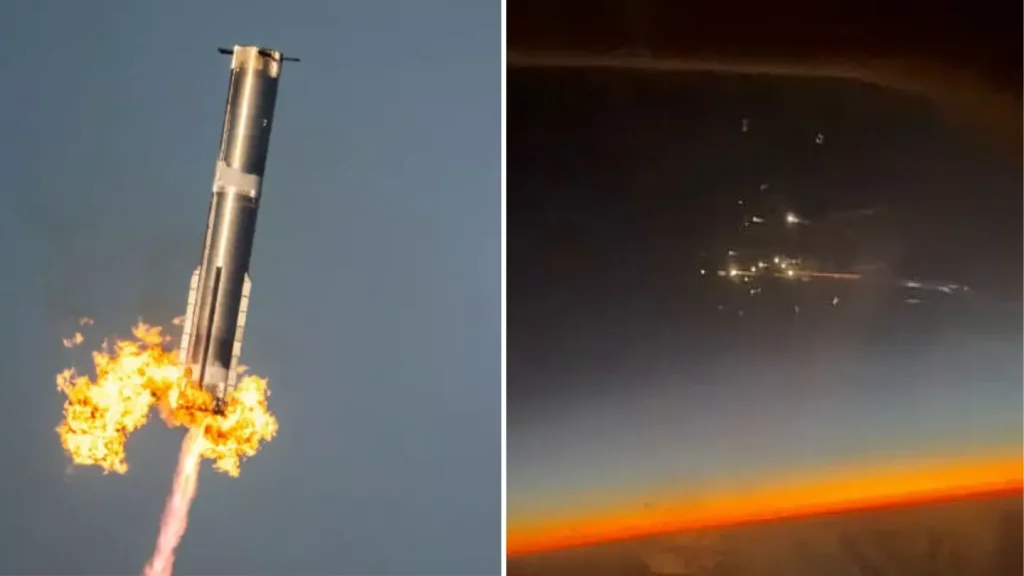Passengers aboard a routine commercial flight had an unexpected experience when they witnessed SpaceX’s latest Starship rocket explode mid-air.
What began as an ordinary journey soon turned into an unforgettable event as travelers found themselves looking out their windows at a fiery display in the sky.
The flight, which was en route from Punta Cana to Chicago, had just reached cruising altitude when passengers noticed something unusual outside.
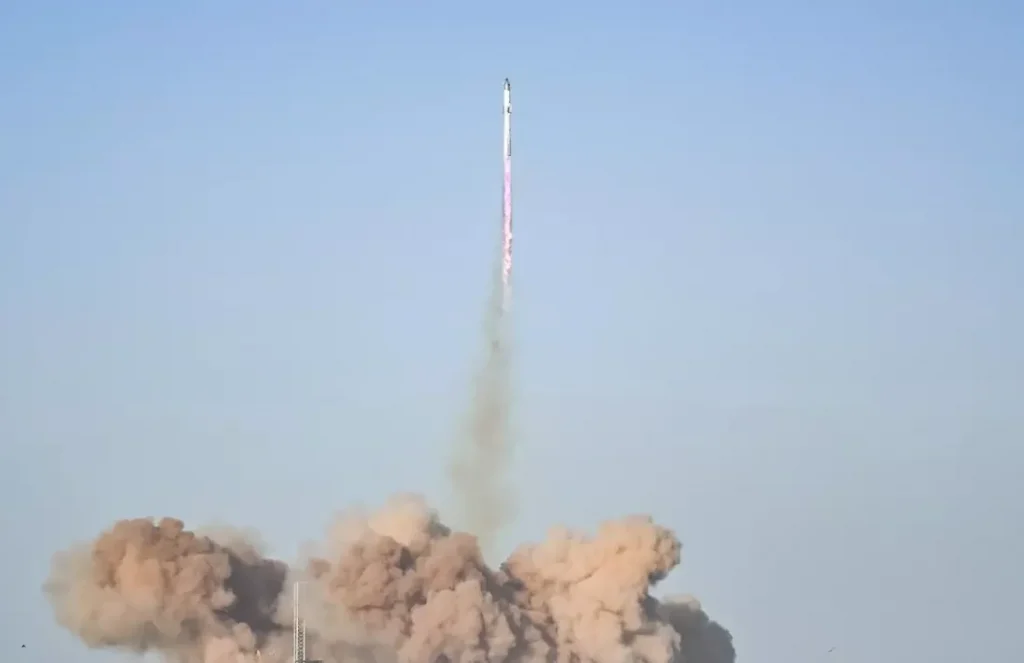
At first, the bright object appeared to be a meteor or a shooting star.
However, within seconds, it became evident that this was something far more significant—a massive spacecraft breaking apart above the Earth.
The spectacular sight was part of SpaceX’s latest attempt to test its Starship rocket, a 403-foot vehicle designed for deep-space missions.
The rocket was launched from SpaceX’s Starbase facility in Boca Chica, Texas, at approximately 6:30 p.m. CST on March 6.
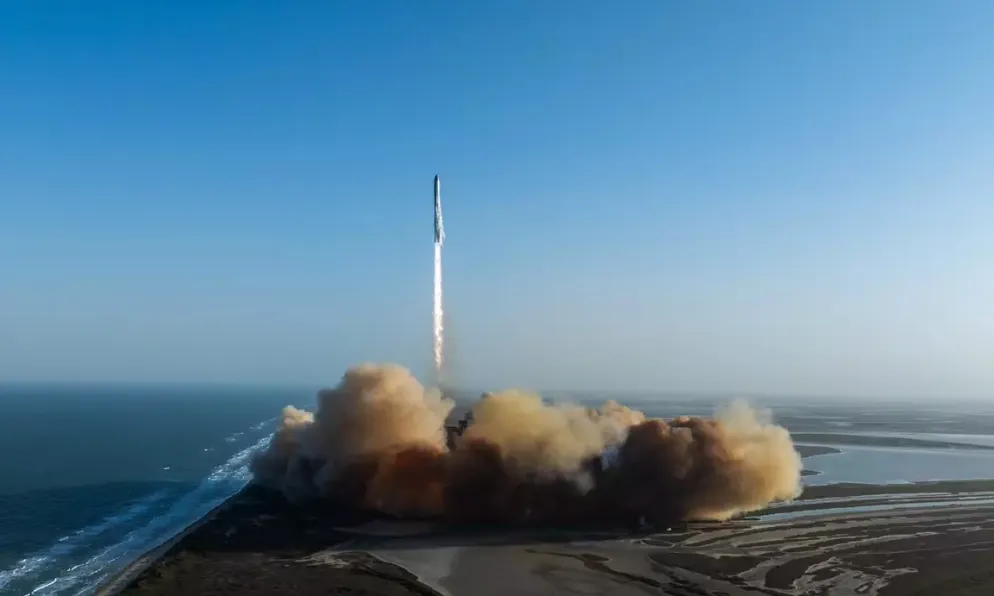
The goal of this mission was to test Starship’s performance in the upper atmosphere, including the deployment of four mock satellites.
However, shortly after reaching nearly 90 miles in altitude, the spacecraft encountered a catastrophic failure.
Videos captured by passengers quickly went viral, with one traveler posting, “Just saw Starship 8 blow up from our flight,” along with footage of the explosion.
The video showed debris from the rocket scattering across the sky as the sunset created an eerie backdrop.
Observers on social media were stunned, with one user commenting, “The fact that debris got this close to a plane in the air is IN-F**KING-SANE!”

Another viewer added, “Crazy thing to witness in person and so up close. You might literally be the closest person in the world to that falling debris.”
The sighting wasn’t limited to those on board the flight.
People on the ground across Florida and the Caribbean also reported seeing fragments of the Starship falling from the sky.
Even astronaut Don Pettit, who was aboard the International Space Station at the time, managed to capture images of the disintegration from space.
Due to safety concerns, multiple Florida airports, including Miami, Fort Lauderdale, Palm Beach, and Orlando, were forced to issue temporary flight restrictions.
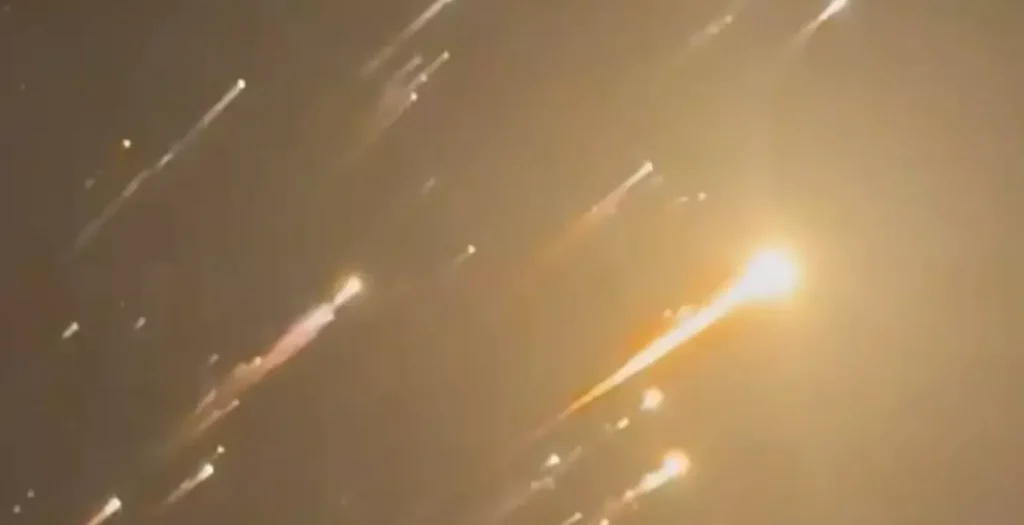
The Federal Aviation Administration (FAA) later confirmed that nearly 240 flights were affected by delays as a result of the incident.
Frontier Airlines, whose passengers had the closest view of the explosion, rerouted their aircraft back to Punta Cana before continuing its journey to Chicago hours later.
In an official report, SpaceX confirmed that the failure was due to an “energetic event” in the aft portion of the rocket, which caused the loss of multiple Raptor engines.
This led to a complete loss of attitude control and eventually resulted in what the company described as a “rapid unscheduled disassembly.”
Final contact with the Starship occurred just nine minutes and 30 seconds after liftoff, marking yet another setback for Elon Musk’s ambitious space program.
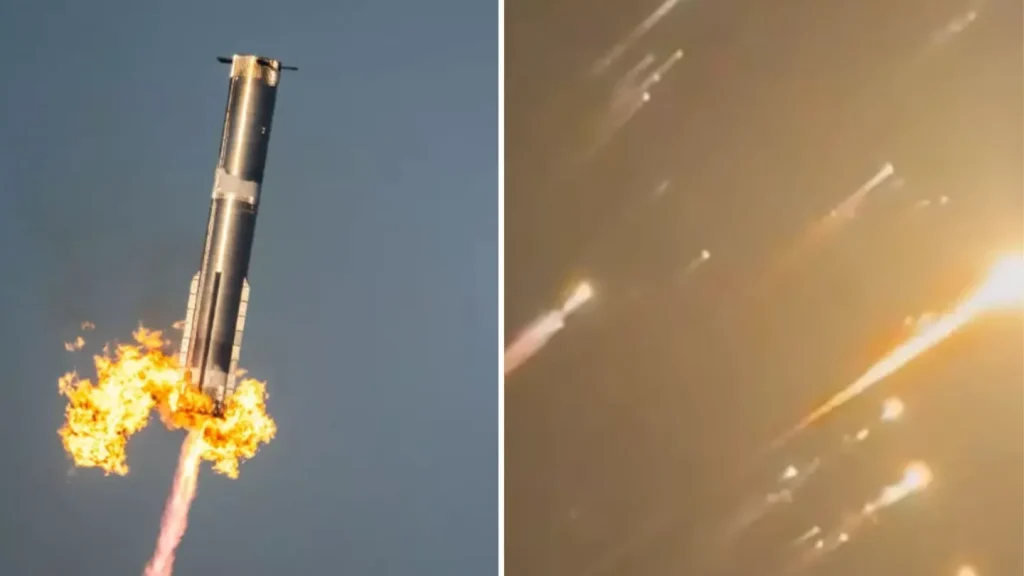
Despite the failure, Musk called it a “minor setback” and reiterated that SpaceX remains committed to testing and refining Starship for future missions.
NASA has already booked the vehicle to land astronauts on the Moon later this decade, while Musk envisions using it to transport humans to Mars.
However, before any future missions can proceed, the FAA has ordered SpaceX to conduct a full investigation and address the cause of the failure.
For the passengers on that flight, what was meant to be a routine journey turned into a once-in-a-lifetime experience.

Witnessing a rocket explosion at 30,000 feet is not something they will ever forget.
As SpaceX continues its mission to revolutionize space travel, incidents like these highlight the immense challenges that come with exploring the unknown.
Featured Image Credit: (Twitter)

